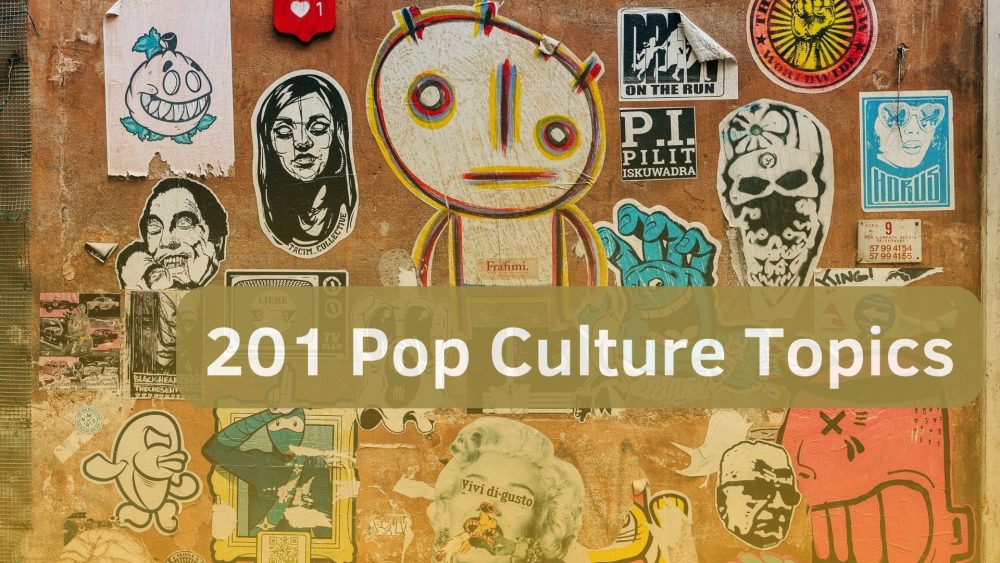Primary And Secondary Sources: In Depth Look

You’ve probably heard about primary and secondary sources, but don’t really know what they are and how they are different. What is the main difference between primary and secondary sources? How do you differentiate between the two and which one should you use?
These are just 2 of the questions we will be answering in this in-depth article about academic source types. In addition, we will show you what tertiary sources are and where you can get more examples. Let’s get started!
Table of Contents
- Why Are Primary And Secondary Sources Important?
- What Is A Primary Source Of Information?
- Primary Source Of Data Examples
- What Is A Secondary Source?
- Examples Of Secondary Sources
- How Are Primary And Secondary Sources Different?
- How To Tell If A Source Is Primary Or Secondary?
- Which One Should I Use, Primary Or Secondary Source?
- A Word On Tertiary Sources
- How Do You Evaluate Primary Sources?
- Do You Need Some Tips Or More Information?
- Frequently Asked Questions
Why Are Primary And Secondary Sources Important?
OK, but why are primary and secondary sources important? Before we explain what each source is, it is important to learn why they are important.
Primary and secondary sources are the only sources you should use to gather data for your academic papers. Primary sources are the most credible and the most authoritative, but secondary sources provide other advantages as well.
You won’t be able to write a research paper without citing and referencing primary and secondary sources.
What Is A Primary Source Of Information?
So, what is a primary source of information?
A primary source is a firsthand account of an event created by one or more individuals during the period in which the event took place or a few years later (as is the case with personal histories and correspondence). Basically, a primary source is the closest you can get to the origin of the information.
Keep in mind that primary sources often contain raw data, which makes them a bit difficult to interpret by students.
Primary Source Of Data Examples
Now that you know the definition of a primary source of data, it’s time to show you some examples. You need to know how to differentiate between primary and secondary sources, after all. Here are some of the best examples of primary sources:
- Diaries
- Government documents
- Autobiographies
- Memoirs
- Published results of scientific experiments
- Personal histories
- Letters
- Unedited video footage or audio recordings
- Correspondence
- Interviews
- Clinical trial results
What Is A Secondary Source?
Interesting, so what is a secondary source? Secondary sources are different from primary ones, even though the differences may be subtle at first glance.
A secondary source often interprets, discusses, synthesizes, or analyzes a primary source. They are not firsthand accounts of the event, but an interpretation of it by somebody else.
There are plenty of reliable secondary sources, so you don’t have to worry about using them – as long as you make sure the author is credible.
Examples Of Secondary Sources
To help you differentiate between primary and secondary sources, we have some excellent examples of secondary sources right here:
- Dissertations
- Encyclopedias
- Many of the published books
- Biographies
- Fact books
- Journal articles
- Editorials
- Commentaries
- Literary criticisms
- Reviews
- Magazine articles
- Histories
- Textbooks
How Are Primary And Secondary Sources Different?
Great, but what is the difference between primary and secondary sources? How are primary and secondary sources different? We know, this is your most pressing question. You want to make sure you use the best type of sources for your academic paper. So, to answer your question in the easiest way possible, the difference between primary and secondary sources is the closeness of the author to the events. A firsthand account of the events, even written or discovered several years after the event, is always a primary source. Think about video footage from World War II or love letters sent by soldiers who fought in the war. These are primary sources.
Secondary sources are interpretations and analyses of the primary sources. To better understand it, think about a World War II documentary. It is a secondary source that uses the video footage and the love letters of the soldiers who actually fought in the war as its primary sources. We hope things are a lot more clear now.
How To Tell If A Source Is Primary Or Secondary?
OK, great, but I don’t know how to tell if a source is primary or secondary! Don’t worry, you are definitely not the only student having this predicament. Things can get confusing when it comes to primary and secondary sources. To help you out, we have created a simple guide you can use to differentiate various types of sources:
- A primary source will provide first-hand evidence and raw information about the subject. A secondary source will interpret or analyze information from another source (a primary source in most cases).
- A primary source gives you first-hand information. A secondary source gives you an interpretation of the information by other people.
- A primary source is often personal and even subjective. A secondary source is much more objective.
- A primary source is the main subject of the research study. A secondary source synthesizes and interprets a primary source.
Which One Should I Use, Primary Or Secondary Source?
Let’s face it: the primary vs secondary source debate will rage on for years. The truth is that academics have split opinions on which sources are best for research. Some say that students should use just primary sources to gather data. Others swear by the use of secondary sources. So, which approach should you take? What should you use, a primary or secondary source?
To be honest, it is our opinion that you can safely use both. The only reason not to choose a secondary source is your professor expressly forbidding it. Also, keep in mind that you should pick your secondary sources with care. Only use authoritative sources or sources that can be trusted. Articles on Wikipedia or on anonymous blogs are not trustworthy. Besides, Wikipedia is considered a tertiary source – not a secondary one. Don’t know what a tertiary source is? Let’s find out!
A Word On Tertiary Sources
We can’t finish the article without talking a bit about the third type of sources: the tertiary sources. These are the sources that organize, index or compile primary and secondary sources. For instance, a textbook can be considered a tertiary source. Generally, any source that repackages information or summarizes it can be safely considered a tertiary source. Examples include directories, almanacs, dictionaries, handbooks, guidebooks, encyclopedias, manuals, bibliographies, and Wikipedia.
How Do You Evaluate Primary Sources?
As we’ve mentioned earlier, you need to be able to evaluate the credibility of your sources. This is extremely important when writing an academic paper because the data you use for your research needs to be as accurate as possible. A “tainted” source can lead to erroneous results and can potentially destroy your entire paper. This is why it’s important to judge primary sources by certain criteria:
- Where is the source located? Websites with .edu or .org domain names are generally more reliable than regular .com websites. Also, sources that list the name and contact information of the author are generally more reliable than anonymous sources.
- Who is the author of the source? This is extremely important because the credibility of the source is closely tied to the credibility of the author. Research the author to find out more about him before you decide to use a certain source.
- Why does the source exist? Ask yourself why the author created the source. Some sources can be biased, used just to make a point. Other sources may be created with the sole purpose of obtaining something from you (think about the supplements market).
- What is the purpose of the source? Is it well-written? Does it contain all the data you need? Did the author cite other words properly? Take the answers to these questions into consideration when deciding which sources to use in your research paper.
Do You Need Some Tips Or More Information?
If you need some tips or more information about primary and secondary sources, you should definitely get in touch with our professionals. Also, we can help you with a more detailed guide on how to write an essay your teacher will absolutely love. You might even be thinking “can I pay someone to do my math?” We can do all of it! Getting online help fast from a trustworthy team of PhD-holding writers and editors can make the difference between a B- and an A+.
Wait, so can you guys do my homework for me today? Yes, our experienced writers, editors and proofreaders can give you the writing and research help you need. We can provide you with high quality custom academic content for any class and we can assure you that your professors will love our work. When you pay someone to do your homework you have to be able to trust them, and we are completely secure. Over the years, we have helped thousands of high school and college students with their homework, essays, research papers, term papers, and even theses.
Frequently Asked Questions
So, now that you have some information on what primary and secondary sources you are ready to do your research and write your paper! Yet, you still might have questions. Here are some clear and quick answers to questions you might still have about primary and secondary sources:
Q: Is a review a primary source?
A: As we’ve mentioned earlier, primary sources are the sources that provide the raw data or evidence. Review articles, be them meta-analysis, systematic reviews or reference works, do not provide raw data. Review articles are derived from primary sources, so they are secondary sources.
Q: Are books secondary sources?
A: This depends on the book you are talking about. Some books are primary sources because they provide raw data. This is especially true for books that have been written by people who have witnessed a historical event themselves. Other books are secondary sources because they use data from primary sources without providing any novel information.
Q: Is a documentary a primary source?
A: In 99% of cases, documentaries are considered secondary or tertiary sources. Even though many documentaries contain primary sources such as photographs, documents and recollections, they are selecting and interpreting them – which makes the documentary a secondary source. The only case where a documentary is a primary source is when you are analyzing an aspect of the movie itself (such as the narrative techniques).
Q: Is a book a primary or secondary source?
A: Depending on the book, it may be a primary or a secondary source. However, in most cases, books are considered to be secondary sources. The memoirs of a person could be considered a primary source, for instance. Also, if you are analyzing a novel literary device or narrative style, the book can be the primary source.
Q: Are statistics primary sources?
A: Yes, statistics can be considered primary sources. Why? Because they give you access to the subject of the research directly. Even though the statistics have been compiled from raw data, they are an analysis that takes into consideration all the data without interpreting it.
Q: Where can I find more primary and secondary sources examples?
A: This is a very good question. In most cases, students are not sure what type of source they should use to support a certain claim – or where to find said source. The best way to get more examples of primary, secondary and tertiary sources is to get in touch with our expert academic writers. We can also send you new sources that you wouldn’t be able to find on the Web.

















